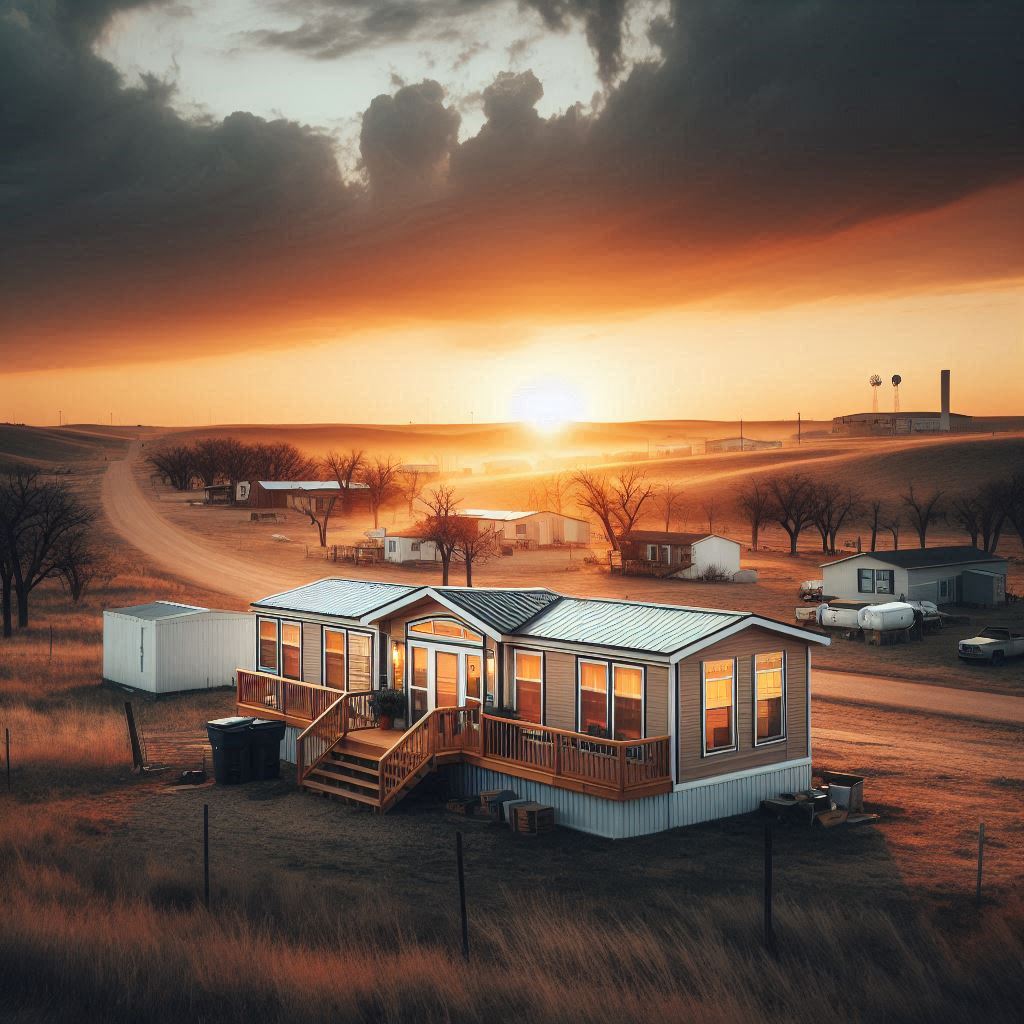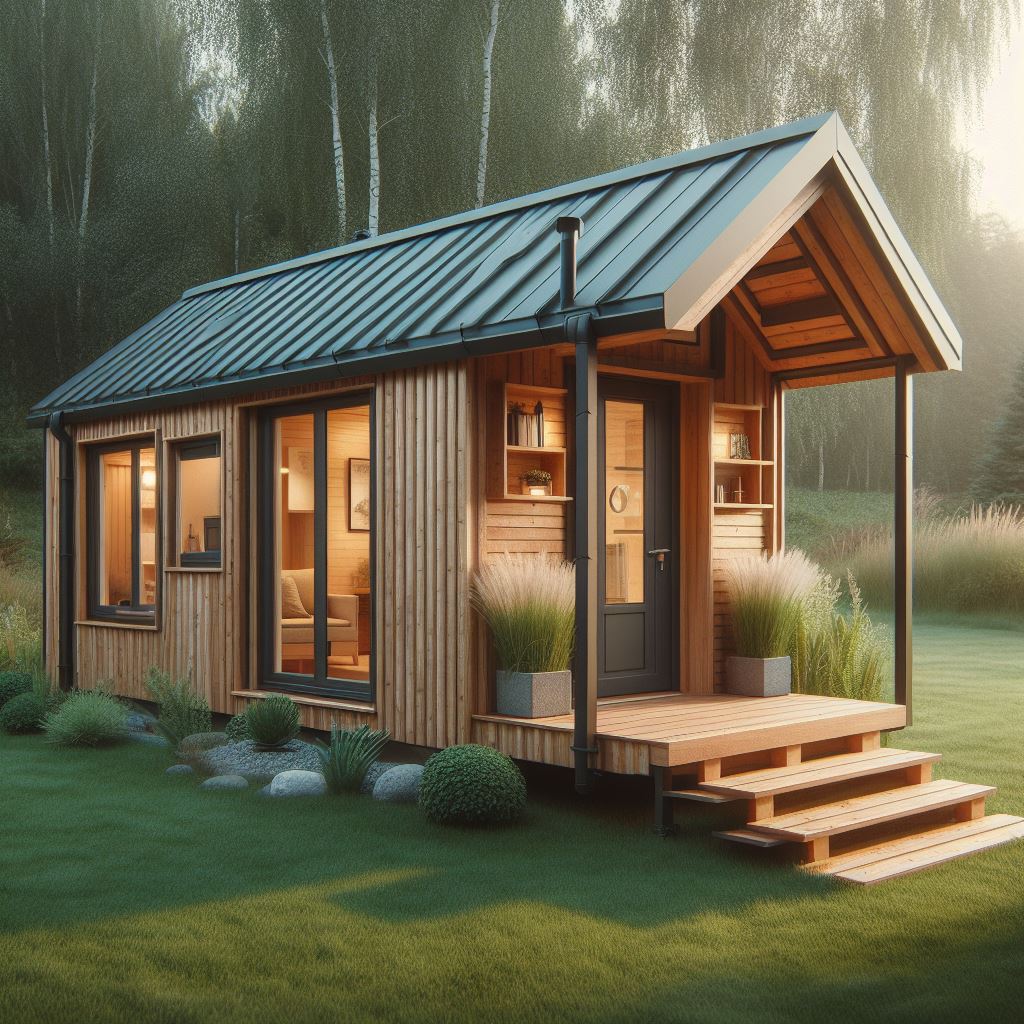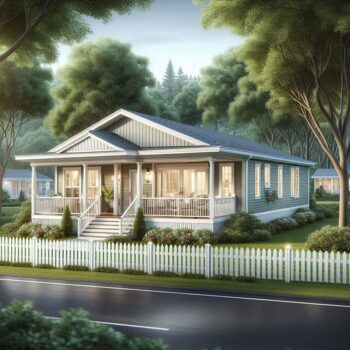The American dream is only complete with homeownership. But the prices of homes keep rising, and building your dream home is expensive, considering the time and stress of running a construction site.
An affordable alternative is a big relief, especially for first-time homeowners. Manufactured homes are cheaper than site-built homes, and you can customize them to your preferences. You can have attractive porches, fireplaces, open kitchen plans, bathtubs, and whirlpools. So, what is a manufactured home?

What is a Manufactured Home?
A manufactured home is a prefab home. Its different parts are constructed and assembled in a controlled environment in a factory. The parts are then moved and fixed onto a foundation on the homeowner’s appointed spot. In contrast, site-built homes are put together piece by piece at the site on a permanent foundation.
This does not make your manufactured home semi-permanent or a mobile home. You can set up your permanent manufactured home on concrete blocks, slabs, metal piers, or any other permanent tie-downs.
Manufactured homes are also commonly referred to as pre-fabricated homes. Both of these terms describe the type of home that this article is focused on.
Manufactured homes refer to factory-built mobile homes constructed after June 15, 1976. This is when the U.S. Department of Housing and Urban Development (HUD) passed stricter guidelines for mobile homes. The HUD requires that manufactured homes be at least 320 square feet and constructed on a chassis. The chassis facilitates transportation to the final location, where the wheels are removed, and the chassis is placed on a foundation.
Manufactured Homes vs. Mobile Homes
People often use the terms manufactured home and mobile home interchangeably, which is confusing. The two are distinct types of homes, not to be confused with each other.
Mobile homes refer to manufactured homes constructed before June 15, 1976. Mobile homes could move from one location to another. Earlier models of mobile homes were mass-produced in uncontrolled factories during the housing shortage after World War II. These units were built without quality in mind and deteriorated quickly, giving mobile homes a bad reputation.
The HUD intervened in 1976 and made changes to the mobile home industry. Mobile homes made after June 15, 1976, are referred to as manufactured homes, and their construction follows the HUD Code. Manufactured homes are not meant to be moved more than once. They are structurally safer and more comfortable than mobile homes. Additionally, they come in various floor plans and offer amenities similar to stick-built homes.
Where Can You Buy a Manufactured Home?
There are a few options you can pursue to purchase a manufactured home. Generally, you can buy from manufactured home retailers who stock new and used units. You may also buy through real estate agents or from manufactured home online marketplaces. Finally, you can buy from a previous owner in some states.
Buying a manufactured home is more like buying a car. The seller will present you with different model houses to view at their center. You will have the option to choose from single-wide, double-wide, or triple-wide manufactured home plans. These can range from a one-bed, one-bath unit of less than 500 square feet to a four-bed, three-bath home covering at least 2500 square feet. You will have the opportunity to customize your home to your taste and make any final changes to the floor plan. The dealers usually arrange for transport and installation at a fee.
How Much Does a Manufactured Home Cost?
Manufactured home prices vary depending on several factors. First, the cost of your manufactured home will depend on its size and customization. A single-wide will cost less than a double- or triple-wide.
A new single-wide manufactured home costs between $80,000 and $100,000, while a new double-wide will set you back potentially up to $160,000. Other factors that determine the total cost of your home include the land on which it sits and utility connections. The land your manufactured or pre-fabricated home sits on may be one of the most important things to consider, as your home needs to have access to things like water, electricity, plumbing, and more.
How Easy is it to Own a manufactured home?
You will need financing to buy a manufactured home unless you have enough cash for a one-off purchase. It is more challenging to acquire financing for a manufactured home than a site-built home. Money-lending institutions treat manufactured homes as personal property rather than real estate. It is easier to get financing for modular homes, as they meet the same building codes as stick builds.

One way to get around this challenge is to own the land on which you place your manufactured home. Placing it on a permanent foundation on your land may bring mainstream mortgages within your reach.
If this is not possible, you may have to get a private personal loan to finance your purchase. Many manufactured home buyers will go for a chattel loan. Chattel loans charge higher interest rates with shorter loan terms than regular mortgages. There are also a variety of government-backed HUD loan options available, such as Federal Housing Administration (FHA) loans and Veterans Affairs (VA) loans.
What is the Best Type of Land to Place a Manufactured Home?
The land where your manufactured home sits will determine several things, such as its total cost, the possibility of getting financing, and recurrent expenses. It is best to place your manufactured home on your property. This might be the most expensive option, but it also opens up the possibility of financing. If you decide to follow this route, it is essential to first check your area’s zoning restrictions for prefabs. Check also for other land use restrictions, such as the size of homes allowed.
When buying property, you should also consider accessibility, permit requirements, and the soil’s suitability for a foundation. Those after a regular lifestyle are better off finding lots in residential areas. If you are interested in more outdoor space, you are welcome to explore the more remote areas.
You can even decide to take certain aspects of your manufactured home off-grid. This might include being disconnected from the electricity grid of your area or off of the main water lines. You’ll need to account for these items greatly when deciding where and how to set your manufactured home on the land you want to.
Other options include living in a manufactured home community, where you pay rent for the land your house sits on. You may also have to pay for utilities, shared amenities, and other services.
One may consider manufactured homes to sit at a junction between mobile homes and tiny homes. They are slightly more customizable and personal than mobile homes, but, they can sit on many different types of land have similar financing to tiny homes.
What Are The Pros and Cons of Manufactured Homes?
Before making a final decision on whether a manufactured home is good for you, consider the following pros and cons:
Advantages of Manufactured Homes
- Affordability: Manufactured homes cost less than comparable site-built homes.
- Speed and Accuracy: Manufactured homes take a shorter time to construct without sacrificing strength and accuracy.
- Easy Maintenance: Standard parts are easily replaceable, and the home is covered by a manufacturer’s warranty.
- Energy efficiency: The HUD Code requires manufacturers to include energy-saving features.
- Versatility: Manufactured homes are great for first-time homeowners and allow for expansion as the family grows.
Drawbacks of Manufactured Homes
- Financing challenges: There are fewer options and often higher costs of financing for manufactured homes.
- Location limitations: You cannot place your home anywhere. You need to secure a piece of land to place your home, which is an added cost.
- The lingering stigma of mobile homes: manufactured homes are still closely associated with mobile homes, even though their safety and aesthetic standards have improved remarkably.
Manufactured homes offer an affordable housing option, and improved safety and quality standards have made them more desirable.

They are a good option for first-time owners who are looking to expand or change their living space later. Before committing to one, beware of your financing options and choose well where your home will sit. Just like for tiny homes, these are important factors.
Conclusion
To wrap up the subject, manufactured homes can serve a very specific and very helpful purpose for those looking to own a home today. What’s important to consider is that the land that the home sits on is one of the most important factors to consider, for the reasons given above. Additionally, special financing will need to be considered for manufactured homes, which are similar to tiny homes in this way.
But, manufactured homes offer customization, personality, and affordability if you can find the proper financing opportunities or simply afford the home outright.



